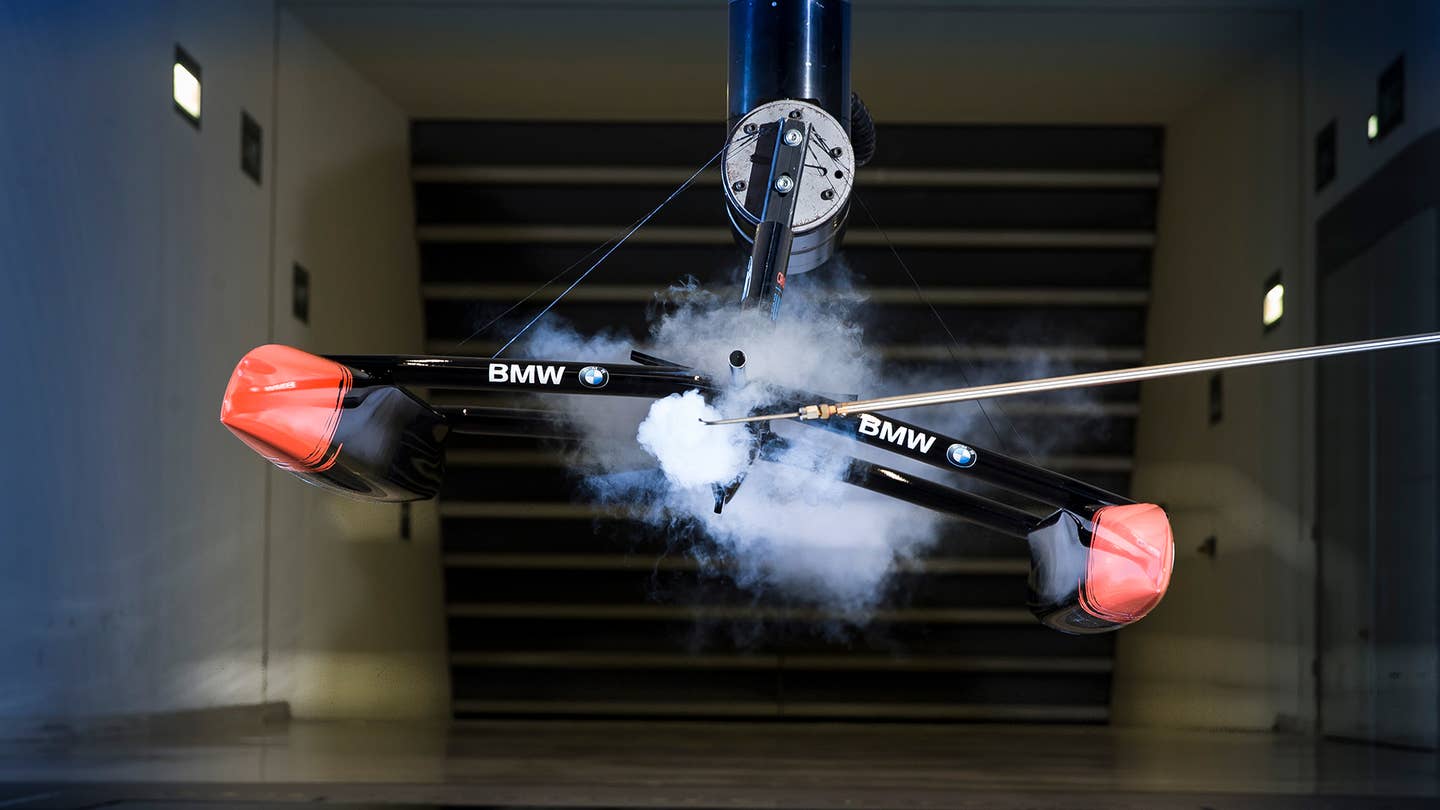BMW’s Quest to Help Oracle Team USA Win the America’s Cup, Again
The carmaker’s aerodynamic and steering feel (gulp) expertise is put to the test.

When it comes to elite sporting events, and the elite athletes that compete in them, BMW gets around. They’ve helped Olympic gold medalists refine their swimming stroke, assisted Olympic bobsledders with the design of their luge, and created groundbreaking wheelchairs for racing Paralympians. The company has optimized the velocity of discus throws for an Olympic decathlete and has even helped car lover Apolo Ohno design his speed skating uniform. So it seems almost inevitable that they would become involved in the development of the flying catamaran that Oracle Team USA will use to attempt to win their third consecutive America’s Cup yachting race.
Wait, yacht? It looks to me like two overturned canoes connected by a raft and mounted to a feather.
“We call it a platform,” says Ian “Fresh” Burns, the Oracle Team USA's director of performance since 2000. “The names—yacht, ship—haven’t quite caught up with the technology.”
BMW’s involvement takes a number of different forms. Their engineers have improved the aerodynamics of the ship’s components using both computer modeling and physical models—the latter completed on site at the automaker's wind tunnel at its Research and Innovation Center in Munich, in which wind speeds can reach over 185 miles per hour. These yachts travel across the majority of the course almost completely out of the water. So, as with hypermiling a hybrid or building a better race car, every extra aero savings adds up. Their wind-cheating efforts have even extended to the crew itself, analyzing each of the member's movements throughout a race and determining where and how they should stand, crouch, reach, and pack themselves in to achieve peak slipperiness
“Even the clothes the guys wear matter,” Fresh says. “One-half pound or one-quarter pound of drag is a big deal.”
Since the design of most of the ship, or at least the part above the hull, is dictated by America’s Cup global race regulations, BMW and Oracle Team USA must shave, scrimp, and optimize within the nether regions wherever possible. Example: improving tensile connections in the hull support crossbeams.
Sadly, having a pair of 1930s teak-decked J-class yachts on hand in the marina alongside the current, er, "platform," didn't exactly convince me that this transfer is advancing things along the proper path. I wondered if perhaps polished black plastic, however expensive and hand-laid, didn’t somehow diminish the elegance of the sport.
“I couldn’t agree with you more,” Fresh says. “It’s not traditional. But I see some of the laminates on expensive watches now, and I suppose I’d take those over a teak table. Still, what’s new today is old tomorrow.”
One of BMW’s challenges was in assisting Oracle Team USA in improving their steering feel (ironic, since "lack of steering feel" is a critique that's been levied against BMW's current crop of road vehicles). Given the constant, three-dimensional inputs of wind, wave, wake, and water resistance, it's a complex problem. “A boat's stability and speed is based on how fast it is to control,” Fresh says. “We’re trying to get the response of the steering controls down to two-tenths of a second, which is roughly the same speed as human perception.” That seems like cheating to me, so it’s probably best that I’m not an umpire, or a judge, or whatever boat rule-arbiter is called. “It’s the same problem they fought in 1850 or 1950,” Fresh says. “Same problems, new solutions.”
Whenever I’ve interviewed race car drivers about the vehicles they drive when they’re off the track, they always seem to choose something super standard and boring. This makes sense; after risking my life at ten-tenths during work, during my downtime I'd want to get into something cushy and safe as well. (Not to mention the fact that even the fastest road cars pale in comparison to the performance feel of a standard racecar.) The same seems to apply to yacht racers. Here in New York, as well as at team practice headquarters in Bermuda, BMW hasn’t handed Oracle Team USA members the keys to a fleet of M2s. Rather, it’s given them electric i3s along with their own custom, solar-powered carports made from sustainable bamboo.
“Bermuda has only 55,000 people, but Hamilton, the town, is on the end shaped like a fishhook, with few roads, so there’s still a lot of commuting,” Fresh says. “A lot of our engineers got kind of excited that they could drive with zero carbon. We were happy that they found interests outside of sailing,” he says, smirking. “But we don’t really like them to get thinking too far outside of the project.”
